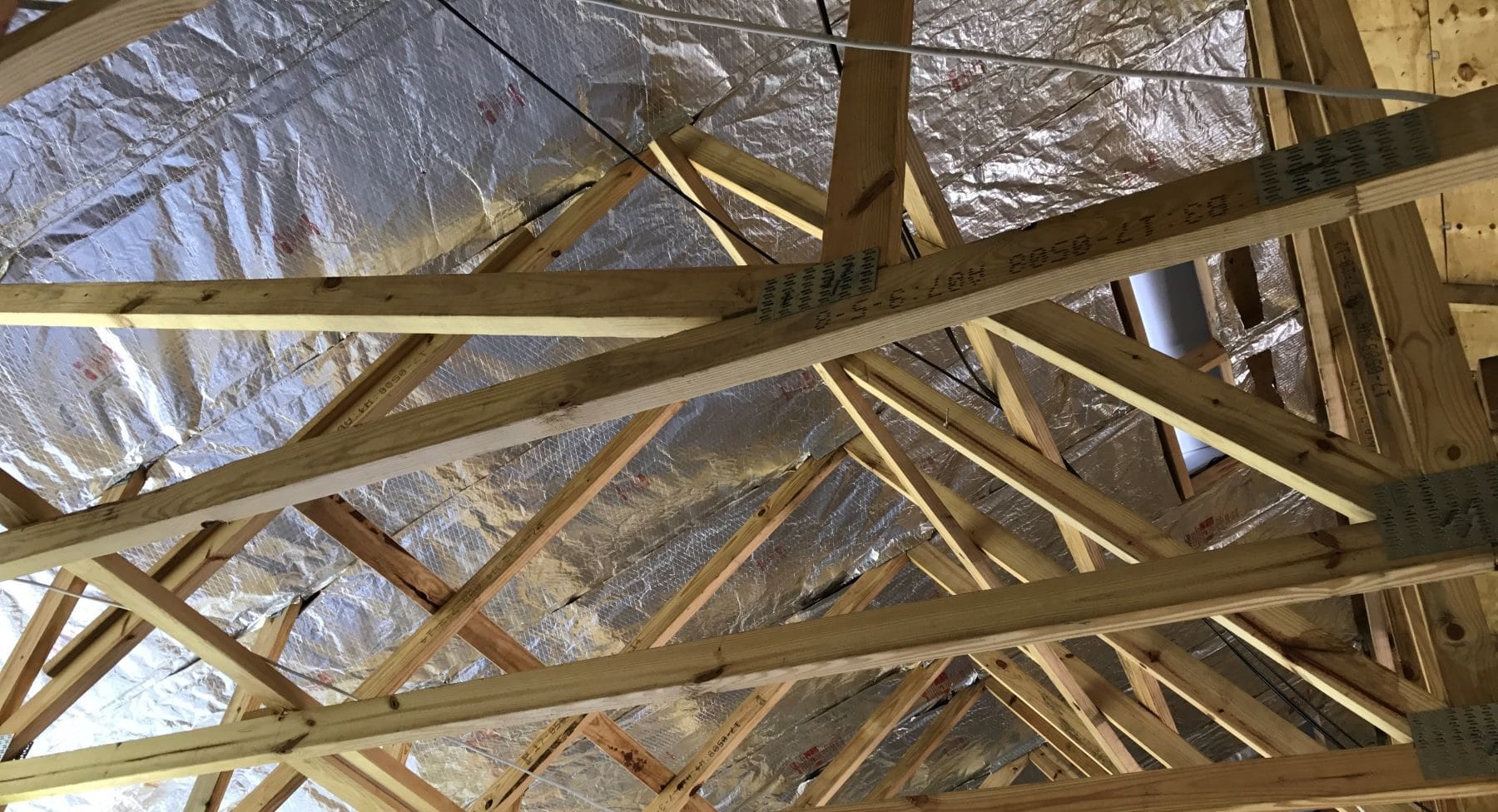Reflective Insulation
Reflective Insulation
Reflective insulation, or “foil insulation,” regulates temperatures by keeping unwanted heat out. This type of insulation has an exterior reflective surface, usually made from aluminum, that helps reflect radiant heat away from the home. Radiant barrier insulation is an effective choice in warmer climates.
A specialized radiant barrier made using heavy duty layered aluminum foil or aluminized polyester is often installed beneath roofs and in attic spaces to keep hot outdoor weather from impacting indoor temperatures. This type of insulation also offers some protection against condensation. Reflective insulation is available as a roll, blanket or board.
Benefits of Reflective Insulation
Reflective insulation is meant to act as a protective barrier between heat radiating elements (like a hot metal roof) and heat absorbing elements (like a ceiling). Reflective insulation helps reduce wasted energy and keeps heating and cooling costs down.
Improved Energy Efficiency
Reflective insulation can be a key component in designing a home that is eco-friendly and cost effective. Reflective barrier insulation protects against 95% to 97% of unwanted radiant heat. This is especially important in sunny, hot climates. Reflective insulation offers added vapor protection, making it a wise choice in humid climates. Protecting your home against temperate heat gain reduces the energy needed to run your cooling system. Reducing energy waste and utility costs can boost your home value, making your home more appealing to renters or future homeowners.
Reflective insulation increases the Home Energy Rating System (HERS) rating of your home and improves the lifespan of your HVAC system. It can also be wrapped around exposed pipes to help keep thermal radiation contained. Install reflective insulation around your water heater to enable more efficient heating and prevent thermal loss. Reflective roll insulation with perforations can be wrapped around cold elements to prevent condensation from forming.
Ideal Insulation for Small Spaces
Reflective barrier insulation comes in bubble and board forms, both of which are very thin and require minimal space to install. Both insulation forms require ¾” wall space thickness for installation, unlike other bulkier forms of insulation. In warmer climates or non-living spaces (such as detached garages), you gain the ability to maximize your interior space. Lightweight reflective roll insulation is also easy to work with and transport.
Reflective Insulation vs. Other Radiant Barriers
While the terms “reflective insulation” and “radiant barrier” are often used interchangeably, there are some key differences between the two. Traditional aluminum sheet radiant barriers reflect heat outwards, but reflective insulation typically has a thicker mid-layer made of air bubbles, foam, or fiberglass in addition to its reflective exterior. As a result, reflective insulation can achieve an R-value of 1.0. It reduces condensation and maintains a Class 1/A Fire Rating. These features can be particularly helpful in using reflective insulation to meet building code requirements.
Considerations for Reflective Roll Insulation Installation
Reflective insulation needs space on at least one side of the material in order to function properly. In other words, your radiant barrier should not be touching another insulation layer. There needs to be a gap (called “dead air space”) between your reflective barrier and the next layer of insulation. The dead air space keeps hot and cool temperatures separate, effectively maintaining the temperature and preventing condensation.
Reflective roll installation technicians should use high-quality seaming tape to prevent heat leakage along the edges of the material. This is a crucial step in installation and can impact your insulation’s effectiveness.
This type of insulation is non-toxic, meaning the installation process is safe and simple. This eliminates the need for safety equipment during installation, making the entire process faster and doesn’t require residents to vacate the space.
Reflective roll insulation does not provide sound insulation. For added protection, however, it can be layered with other forms of insulation to increase the R-value and add sound insulation. When combined with multiple types of insulation, the radiant barrier insulation acts as a thermal insulation facing material and can reduce heat transfer from the underside of a roof.
Local Reflective Insulation Contractors Near You
Are you looking to make your home more energy efficient? TruTeam is a leading installer of insulation in the nation. Contact your local TruTeam branch today to learn more about our radiant barrier insulation products and installation services in your area. We install spray-on and traditional radiant barrier insulation. Request a free quote today!
The Team You Can Trust
Get Your Quote


Installers

